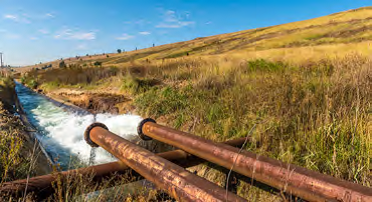DRDGOLD Ltd believes the commercial success of its new Far West Gold Recoveries project may lift the company’s profile in the investment domain, positioning it for growth and evolving its share into a ‘growth’ stock.
In its integrated annual report for the year ended 30 June 2018 released today, CEO Niël Pretorius says: “The improved performance in our share price enabled us to pitch an offer to Sibanye-Stillwater for their West Rand surface gold portfolio at a share exchange ratio that struck a good balance between what we should be paying for the asset, and what they were asking for it.
“How big or small the inflow of capital might be should Sibanye-Stillwater choose to exercise its option to increase its stake in DRDGOLD from 38% to 50.1% is entirely up to DRDGOLD shareholders who ultimately determine the share price,” Pretorius says.
DRDGOLD chairman Geoffrey Campbell says: “Not only does the transaction add significant longevity to our operations but also the dumps that we have acquired are of a higher grade than our existing dumps and therefore we expect the operations to be more profitable than our existing operations.
This will make DRDGOLD more resilient to a lower gold price, which is always a good thing.”
Development of Far West Gold Recoveries, which is expected to increase DRDGOLD’s reserves to some 6 Moz, is planned in two phases. Phase 1 development, already well under way, involves upgrading of the Driefontein 2 plant to treat material from the Driefontein 5 dam at a rate of 500,000 t/month from early in calendar 2019.
Of the R300 million loan secured to finance Phase 1, Campbell says: “Our ability to borrow money at a time of dull gold price performance in a sector that is not attracting capital is further demonstration of DRDGOLD’s positive reputation.”
Phase 2, which involves consolidation of what remains of Phase 1 material and the remaining tonnes of material acquired, envisages a monthly production rate of 1.2 Mt and is planned to be enacted within 24 months after the start of Phase 1 production.
Key features of Phase 2, feasibility of which will be tested over the next two years, are the construction of a large, centralised plant and an ultra-high volume deposition facility.
Phase 2, Campbell says, has the potential to be “hugely significant” not just for DRDGOLD but for South Africa as a whole.
“With the right gold price and forward-looking government policies to support a fair and stable business environment to attract the necessary long-term capital, we could be looking at a much larger operation.
“Phase 2 would require substantial development and the resulting investment would not just pay shareholders’ dividends for many years to come but also provide skilled jobs and training, tax payments, community development and extensive environmental clean-up.”











